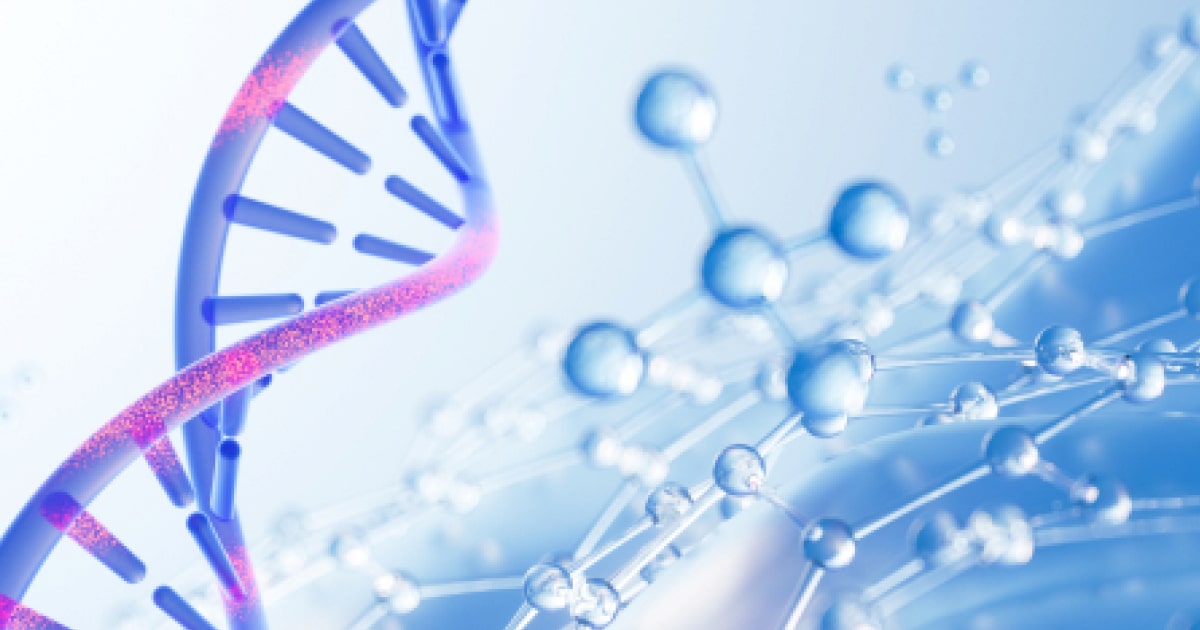
Expert Reviewed By: Dr. Brandon Colby MD
Homocystinuria, cblD type, variant 1 is a rare genetic disorder that affects the metabolism of vitamin B12, leading to a range of health issues. Early diagnosis and treatment are crucial to manage the condition and improve the quality of life for affected individuals. In this article, we'll explore the importance of understanding, diagnosing, and using genetic testing for Homocystinuria, cblD type, variant 1.
Understanding Homocystinuria, cblD Type, Variant 1
This rare metabolic disorder is characterized by the impaired processing of vitamin B12, leading to elevated levels of methylmalonic acid (MMA) and homocysteine in the blood and urine. It is caused by mutations in the MMADHC gene, which encodes an enzyme involved in the metabolism of cobalamin, a form of vitamin B12. The condition can lead to a range of symptoms, including developmental delay, intellectual disability, seizures, and vision problems. Early diagnosis and treatment are crucial to manage the condition and prevent severe complications.
Diagnosing Homocystinuria, cblD Type, Variant 1
Diagnosis of Homocystinuria, cblD type, variant 1 typically involves a combination of clinical evaluation, biochemical testing, and molecular genetic testing. Biochemical testing can detect elevated levels of MMA and homocysteine in the blood and urine, while molecular genetic testing can identify mutations in the MMADHC gene.
In some cases, the disorder may be identified through newborn screening programs, which can detect elevated levels of MMA and homocysteine in the blood. However, not all newborn screening programs include testing for this specific condition, so it is essential for healthcare providers to be aware of the signs and symptoms of Homocystinuria, cblD type, variant 1 in order to initiate appropriate diagnostic testing.
The Importance of Genetic Testing
Genetic testing plays a crucial role in the diagnosis and management of Homocystinuria, cblD type, variant 1. By identifying the specific mutations in the MMADHC gene, healthcare providers can confirm the diagnosis, guide treatment decisions, and provide accurate genetic counseling to affected individuals and their families.
Early Diagnosis and Treatment
Genetic testing can help identify Homocystinuria, cblD type, variant 1 early in life, allowing for prompt initiation of treatment to prevent or minimize the severity of symptoms. Treatment typically involves dietary modifications, vitamin B12 supplementation, and other supportive measures to manage the condition. Early diagnosis and treatment have been shown to significantly improve the long-term outcomes for individuals with this disorder (1).
Prenatal Diagnosis and High-Risk Couples
For couples with a known risk of having a child with Homocystinuria, cblD type, variant 1, prenatal genetic testing can be a valuable tool to determine the risk of the disorder in the developing fetus. This can help inform decisions about pregnancy management and allow for early initiation of treatment if necessary. A study highlighting the importance of prenatal genetic testing in high-risk couples describes two infant deaths likely due to cblC, emphasizing the need for early diagnosis and intervention (2).
Understanding the Genetic Landscape and Phenotypic Variability
Genetic testing can also help researchers better understand the genetic landscape of Homocystinuria, cblD type, variant 1, and identify rare mutations and phenotypic manifestations. A study analyzing the clinical features and genetic data of patients with classical homocystinuria in Belarus revealed rare mutations and phenotypic manifestations, highlighting the importance of genetic testing in understanding the full spectrum of the disorder (3).
Large-Scale Prospective Screening Studies
Genetic testing can also be used in large-scale prospective screening studies to better understand the prevalence and natural history of Homocystinuria, cblD type, variant 1, and inform public health strategies to improve the detection and management of the disorder. A study on monogenic causes in the Type 1 Diabetes Genetics Consortium Cohort suggests the need for large-scale prospective screening studies using markers of autoimmunity (4).
Conclusion
Understanding, diagnosing, and using genetic testing for Homocystinuria, cblD type, variant 1 is crucial for early detection, treatment, and management of this rare metabolic disorder. Genetic testing can help healthcare providers confirm the diagnosis, guide treatment decisions, and provide accurate genetic counseling to affected individuals and their families. It can also inform prenatal diagnosis for high-risk couples, contribute to our understanding of the genetic landscape of the disorder, and support large-scale prospective screening studies to improve public health strategies.
About The Expert Reviewer
Dr. Brandon Colby MD is a US physician specializing in the personalized prevention of disease through the use of genomic technologies. He’s an expert in genetic testing, genetic analysis, and precision medicine. Dr. Colby is also the Founder of and the author of Outsmart Your Genes.
Dr. Colby holds an MD from the Mount Sinai School of Medicine, an MBA from Stanford University’s Graduate School of Business, and a degree in Genetics with Honors from the University of Michigan. He is an Affiliate Specialist of the American College of Medical Genetics and Genomics (ACMG), an Associate of the American College of Preventive Medicine (ACPM), and a member of the National Society of Genetic Counselors (NSGC)